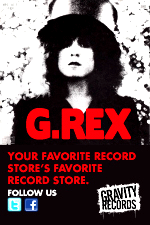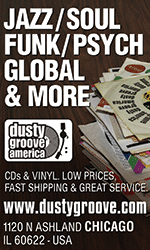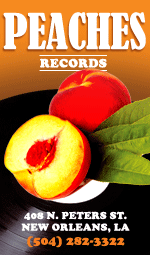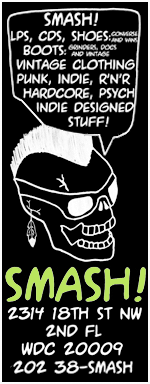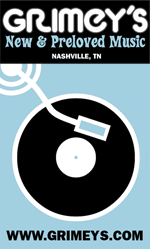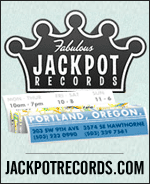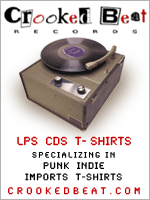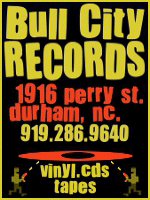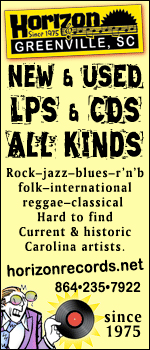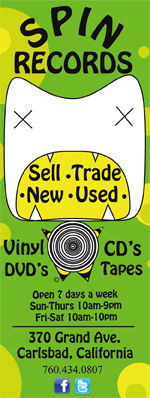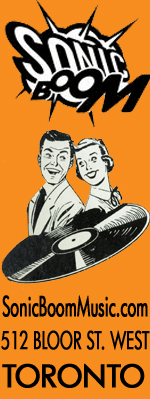
I successfully de-programmed myself from the Cult of Frank Zappa at the tail end of the seventies, when I finally realized he was a smug, smarter-than-thou anal-retentive with bad classical and jazz tendencies and a proclivity for 13-year-old potty humor who held everyone, including his own fans, in contempt. I finally realized the only reason I was listening to him was for the guitar solos. And in the end they just weren’t enough. I left the fold, ashamed of myself for having been suckered in by the arrogant sour-puss in the first place, and never looked back. In the end, I just wasn’t prepared to drink the strychnine-laced Kool Aid.
That’s how these things always end, right?
The Village Voice’s Robert Christgau, never a fan, finally lost patience not too long after I did; his parting words to Zappa, written in 1982, were “Oh shut up.” Possibly he wanted him to just shut his mouth—Zappa’s snide and increasingly low-brow satire was what did me in. This explains why the only Zappa album I’ve been able to listen to over the years—and it’s something I only do every decade or so—is the 1969 jazz-rock exercise Hot Rats. Zappa doesn’t open his mouth once. Some of it is fusion with a stick up its ass—his fussy orchestral arrangements guarantee the lesser songs don’t swing—but a few of its songs do rock.
Zappa himself made clear that the lyrics were a sop, and a bit of condescension on his part, to his no-nothing audiences. He once told an interviewer, “Americans, in general, know very little about music. They like to hear words, so I give them words—sometimes they overlook the music involved.” Look down upon much? And had the guy ever heard of jazz? By music he meant the classical works of Europeans like Edgar Varese. For Zappa rock music was a lower life form and a kind of afterthought.
“I started writing songs at 14,” he told the same interviewer. “I was influenced by mainly chamber music and orchestra music. I didn’t write a rock ‘n’ roll song until I was 22.” It’s hard to escape the conclusion that he considered rock ’n’ roll stooping, and why he lowered himself is a mystery. I can only conclude he couldn’t cut it in avant garde music circles or that he was in it, rock that is, only for the money. Where have I heard that before?
His early music was always a satirical mishmash of rock, jazz, Varese, and general weirdness, but by 1969 he’d moved in the direction of jazz-rock fusion, which led to Hot Rats and 1972’s Waka/Jawaka. After that he moved into a more crowd-pleasing hard rock direction, with songs featuring lyrics that catered to the kinds of people who find yellow snow funny. His satire coarsened. He had yet to write lame novelty songs poking fun at Valley girls, gays, or people who liked to dance, or to write such classics as “Why Does It Hurt When I Pee?” But he was getting there. And this was a man who held most of his fellow rockers, and rock itself, in contempt, because it was stoopid?
In 1974 he returned to the jazz rock of Hot Rats by beginning to record what would become an album he intended to call Hot Rats III (counting Waka/Jawaka as Hot Rats II). He returned to recording the album in 1976, but it wouldn’t come out until 1979. The reasons and details for the delay are boring, as is the fact that it wasn’t Zappa who released the album but his record company, and with a title (Hot Rats III became Sleep Dirt) and cover Frank hadn’t approved.
What is relevant is this. If Hot Rats, while not an unalloyed triumph—only three of its tracks really cook, and one of those cooks largely thanks to the contribution of one Captain Beefheart—Sleep Dirt is largely a tepid, fall-flat-on-its-face fusion bore. There are no fireworks on Sleep Dirt a la Hot Rats’ “Willie the Pimp,” “Son of Mr. Green Genes,” and “The Gumbo Variations,” all of which convince me that at his best Zappa had the skills to pay the jazz fusion bills. Sleep Dirt is a sterile and uninspired snooze.
If on Hot Rats Zappa occasionally manages to transcend his anal retentive qualities and stick-up-ass orchestral stiffness, on Sleep Dirt he fails almost completely, and what’s worse largely refuses to stoop to doing the one thing he always did well—play electrifying electric guitar. With one exception the songs are short (a blessing) and overly polite, wallpaper music for elevators. Which makes them pretty much useless, because nobody puts wallpaper in elevators.
Opener “Filthy Habits” is a heavy metal drag but stands head and shoulders over most of its companions because it is largely a guitar showcase. Not one of Zappa’s more inspired showcases, mind you, but it has feedback galore and a nice psychedelic gloss. And he ignores the resident talent to play keyboards himself, and it works. Sounds like he’s been listening to The Beatles rather than Bartok, and that’s a good thing. It’s no triumph except when considered in present company.
“Flambay” is cocktail lounge music featuring the Liberace piano stylings of George Duke and the prissy percussion of Ruth Underwood, whose virtuoso and irritating mallet abuse was as responsible as anything for helping me to escape the Zappa cult. It’s a sort of waltz, or something, but it’s also an easy-listening number that somehow makes for hard listening. I’m guessing Duke is playing for laughs, but I don’t find the joke very funny, and I spend most of “Flambay”’s playing time wishing it would find a quiet corner to die in. Aside from the fluid stand-up bass playing of Patrick O’Hearn, I can’t think of a single good thing to say about it.
“Spider of Destiny” is what you expect when you hear someone use the words “jazz fusion.” Only it’s more regimented—call it military band jazz fusion. Zappa’s guitar has that awful Jeff Beck sound to it, and its forward march momentum is augmented by occasional frilly piano runs by Duke (parody again, I hope) and the annoying percussion of Underwood. The question arises here as it does throughout this album—is this stuff meant to be satire? Is it possible Zappa holds jazz fusion in as much contempt as he does rock ’n’ roll? I would argue that there are much funnier ways to send up jazz fusion, and further that most jazz fusion does a swell job of sending itself up without trying.
“Regyptian Strut” is a low point, a sort of low rent version of Hot Rats’ “Peaches and Regalia,” and it’s stiff as a starched collar. The regal fanfare delivered by the brass of Bruce Fowler is a constant annoyance, and you think it can’t get worse until Ruth Underwood starts in with her infernal mallets. This Regyptian doesn’t strut, it rides in on a dingy chariot—it’s a second-rate piece of orchestral nonsense with nothing to say for it but a few tastes of George Duke’s piano. I’m betting Zappa was patting himself on the back the whole time thinking how clever it was. And I’m betting a lot of his fans were patting themselves on the back over what evolved tastes they had, when in effect this stuff gives me a new respect for Emerson, Lake & Palmer.
Zappa’s guitar has that same annoying “jazz tone” on “Time Is Money,” which starts out like bad Steely Dan before throwing all kinds of changes in your face. Zappa does nothing much on guitar, and the whole thing sounds as tightly wound as a clock shoved up a tight sphincter. This isn’t improvisation—I suspect Zappa had the whole thing, by which I mean every single note, charted out in advance. It certainly sounds that way. On Hot Rats at least a few of the songs sound improvised, at least to a degree. On this one nothing sounds left to chance–Frank wouldn’t want any of his musical drones fucking up his genius by thinking on their feet.
“Sleep Dirt,” a collaboration on guitars by Zappa and James Youman, does have an improvisatory feel, and I don’t hate it, but I would certainly never listen to it except under duress. It’s a mellow but fluid number, and Zappa plays well, but it’s also a snooze. And it doesn’t exactly exude warmth—Zappa isn’t aiming for intimacy, he’s just showing off. A Frank Zappa solo that does nothing for me seems like a violation of the social contract—the thrill I got from his solos kept me coming back to him long after that inner voice of mine had started telling me the guy was a sleazy and smug case of terminally arrested development.
Closer “The Ocean Is the Ultimate Solution” is the LP’s only lengthy track, clocking in at thirteen minutes and twenty seconds, and on it the band stretches out. Unfortunately, its excitement level never comes close to the best songs on Hot Rats, and Zappa prefers to go for “jazzy” on the guitar, depriving the song of a rock edge. And things don’t develop any rhythmic thrust until after the five-minute mark. Patrick O’Hearn plays a couple of swell acoustic bass solos (imagine that), then Zappa finally cuts loose, but it’s not one of his more memorable guitar outings, although the final minute or two get better. His jazzy guitar tone kinda ruins it for me as well. It’s not a bad ride, but it will never find itself listed amongst Zappa’s best outings. In other words, it’s a rat, but a not very hot one.
The word “genius” gets bandied about a lot when people talk about Frank Zappa, but what I hear is a guy whose low opinion of rock music as an art form and knee-jerk avant garde proclivities invariably led him to constantly complicate his songs past the pleasure point. To quote Robert Christgau again, Zappa’s music consisted of “eccentric clichés, replete with meters and voicings and key changes that are as hard to play as they are easy to forget.” In short, he put empty showing off in front of putting out great music.
And what kind of adult genius caters to the mindsets of adolescents? (Christgau again, on The Mothers’ Fillmore East, June 1971: “The sexist adolescent drivel that hooks these moderne mannerisms should dispel any doubts as to where Big Mother finds his market—among adolescents and sexists of every age and gender (bet he gets more adults than females).”) Smug in his belief that he was the smartest guy in the room, he left behind a body of emotionally parched music for cultists who thought his smarts somehow made them smart too. I was lucky. I got out.
And Sleep Dirt proves that his work went downhill. Put it side by side with Hot Rats or Waka/Jawaka and what you have is straight-to-the-cut-out-bin jazz fusion. Sleep Dirt isn’t drivel, but it’s anything but rewarding. Even during my years as a fan I thought it was a waste of money. Nowadays I think I was overrating it. Word to the wise: Buy Hot Rats. This one is purely cold rats, and dead on arrival.
GRADED ON A CURVE:
D















